Pickup probe in action
Place of Birth - "The Black Pelican"
"The "Black Pelican" is of course Catalina EC-FMC. She was manufactured at the Consolidated works at Lake Ponchartrain, New Orleans, in 1945. Here is a picture of the factory from the 1940s.
The U.S. Naval Air Station, 1948 (which would make way in the not too distant future for Louisiana State University at New Orleans, now the University of New Orleans) and, above it, Pontchartrain Beach. During World War II, the long factory building above Pontchartrain Beach at Franklin Avenue housed Consolidated Vultee Aircraft Co., which built seaplanes. By 1948 the facility had been converted to private industrial use. Today, the Levee Board occupies the property.
That was then, this is now...according to google earth.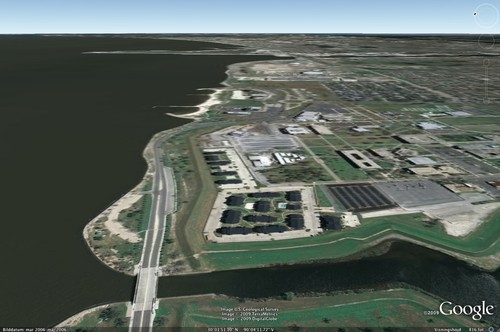
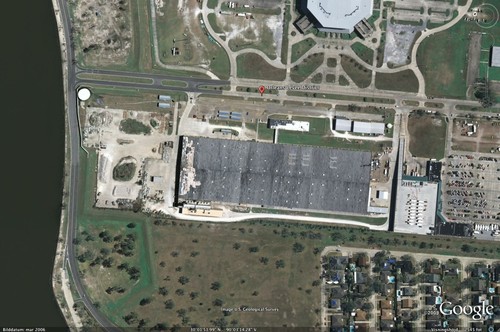
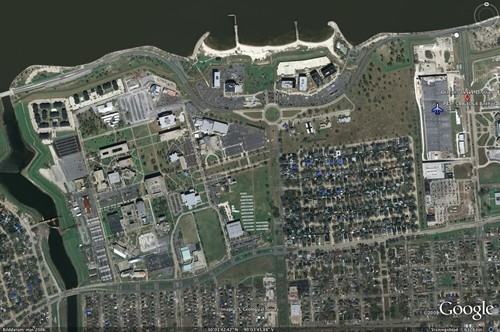
Five intensive days in September



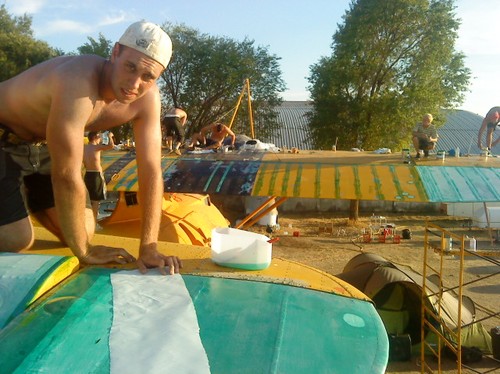


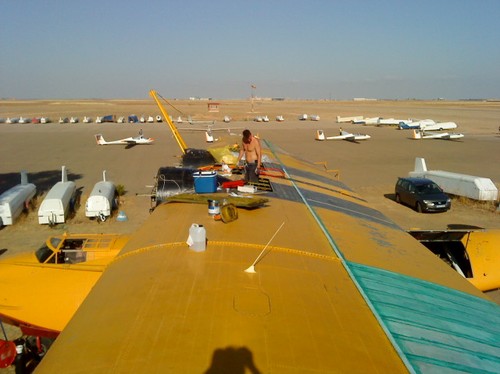



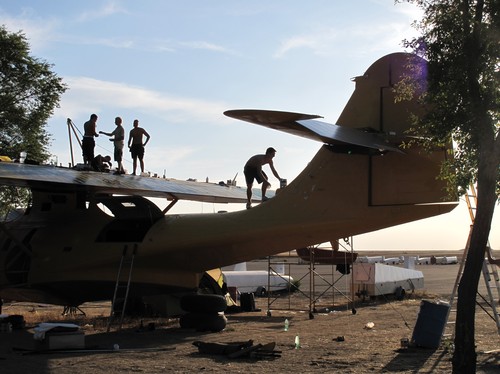




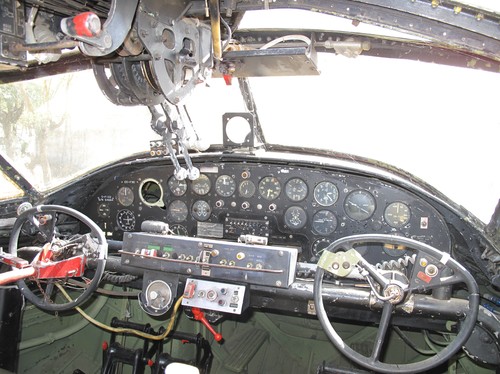

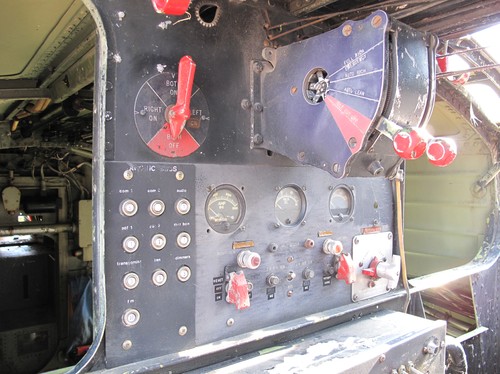

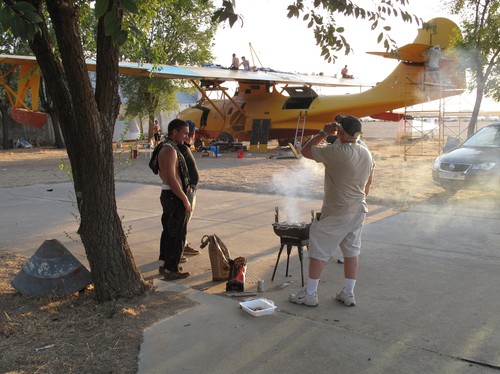



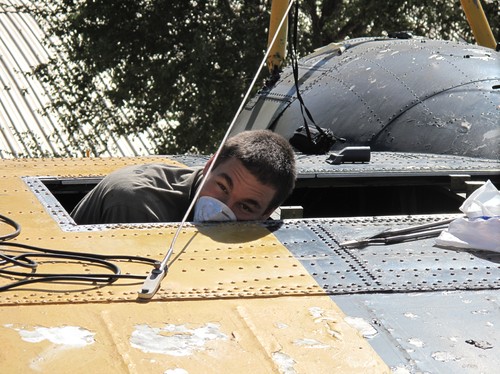
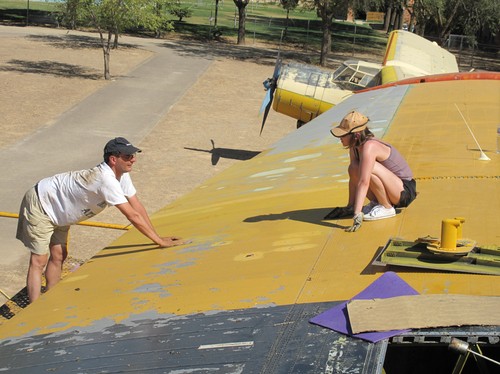


Shiny, shiny...

"Shiny" rudder, newly covered...
Micke Å looks at his work. The tanks are now in place. Well done!

The Cat-struggle goes on...

Keep the good work up, lads!
Working hard under the burning Spanish sun
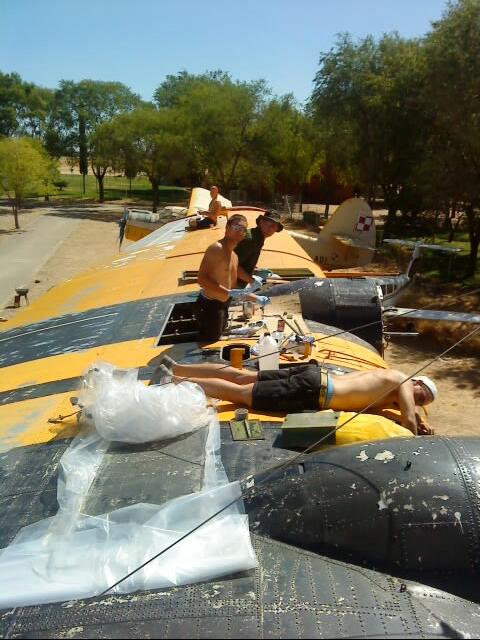
Stoffe, Micke, Markus and Alexander are all working hard under the burning Spanish sun. The plan is to get the tanks, fabric and most of the hoses done this time.
I have been promised that the props and engines will be installed and ready to run by the end of the month.

Soon we will start working in Spain again. Hopefully, a lot of things will come together in September



Breaking news!!! (Nothing new really, just to catch your attention)

The engines are ready in Cuatro Vientos and will remain there until the props are ready to be installed.
The props will be overhauled soon, it is just a matter of whee to do it. I consider having the aircraft registred in either Sweden, Spain or USA. Depending on where it will be registred. The props ,aswell as the engines have to be overhauled at shop that is recognised by the authorities in the country of registration. I will need afew more days before I can make the right desicion...
The old hoses together with tools and material to manufacture new ones.
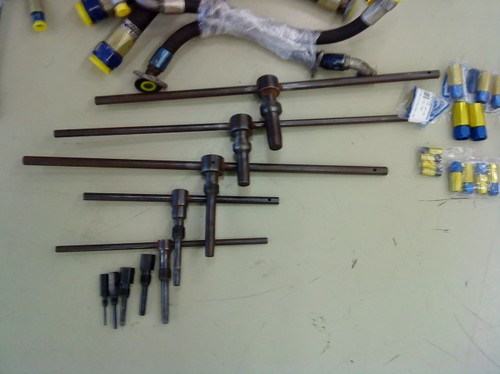
The tools are marked DC.4.
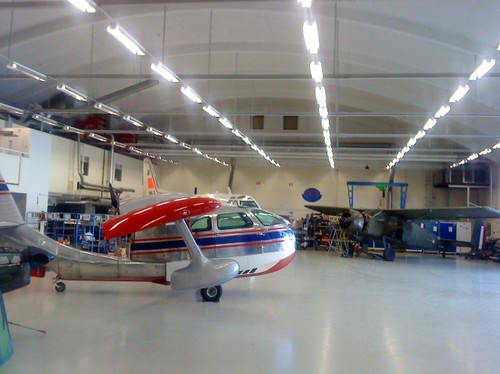
The Seabee SE-AXR was sold new in Sweden 1947 and returned in 2003 after a few years in Norway.
It has the levers in the ceiling, pretty much as the Catalina, but only burns 65Liters/h compared with
about 350L/h to feed the Cat. Beeing a flying boat it is a good basic flyingboat skills trainer.

Hägenäs (Heronpoint) just northeast of Stockholm, was the site where F2 (wing 2) of the Swedeish airforce had its main base. The funny thing about this base was that they only had hard surface during the winters, the other seasons they operated seaplanes.

The entrance:

A salvaged Junkers F13
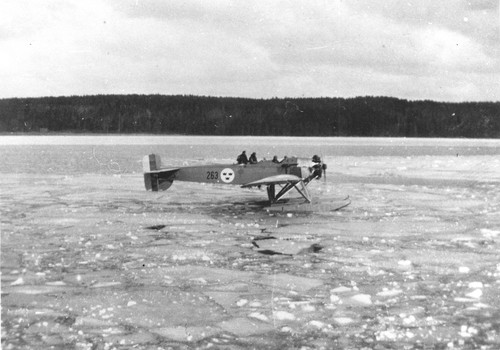
The Plywood floats on this S5 Hansa were really tough!

A visitor rom far away.

Who can this be?
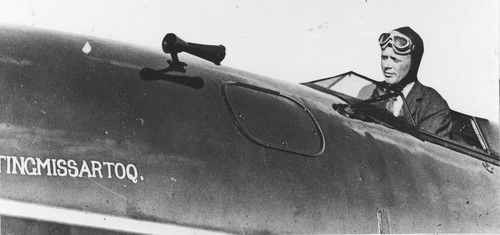
A real superstar of the time. No one less than Charles Lindbergh.

As you can see, you do not need water to fly a float plane. (Plywood floats again, these are about 6 meters long)

Snow will do just fine aswell!

Mechanics heaven!

A few rare birds also visted Sweden during the war and some ended up at F2, like this Blohm&Voss BV138.
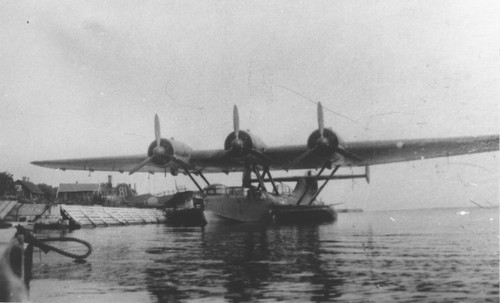
A few DO24´s also came here and even joined the force.

The first aircraft manufactured by SAAB i Linköping, the dive bomber, B17, her in the seaplane version , S17.

T2´s taking off

The Marines in the late 20`s

Is this a rare sight? A Swedish airforce Mosquito as seen from a TP47 Catalina.

Big boys playing with their boat by the beach....



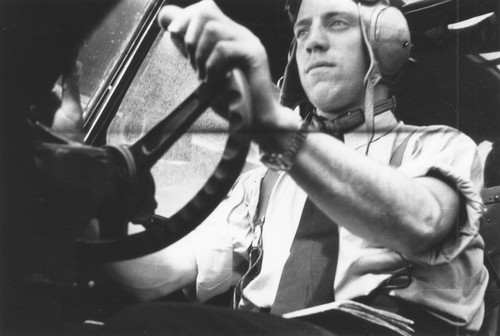
A few nice pics of the Catalina in "action"

There were three Catalinas in the airforce one was shot down by the sovjets, one is preserved at the airforce museum and 47003 was scrapped at F2.....
May 17-21

A new carb for one of the engines.

Butyrate, silver and nitrate dope for the work on the fabric

Borensbergs mekaniska. A local, friendly and very well equipped machine shop where they can do
almost anything you can possibly need,. fast with high prescition at a very competitive price.

R/H engine after refurbishment at the shop
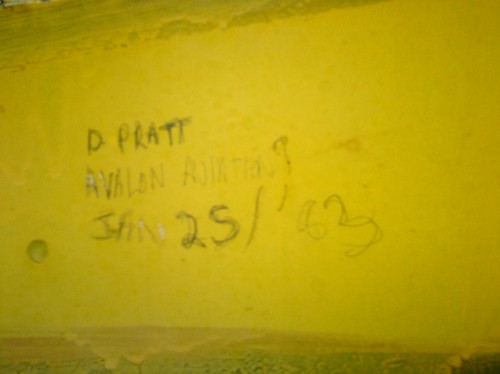
Working in the tanks is a very tiring, slow, and boring work but very necessary. A lot of sealant is loose.
In the ceiling of R/H tank I found this grafitti. D. Pratt, if you read this, write something please.
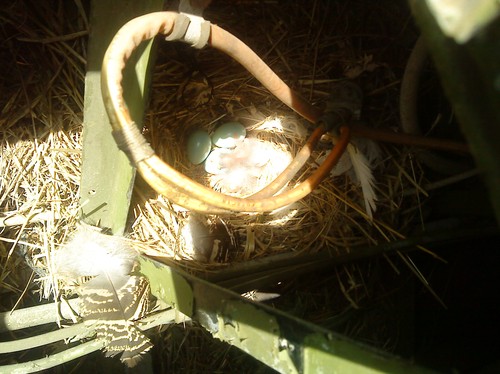
There are more than 60 hoses that I will have to replace. The oldest I have found so far was
manufactured in january 1962... A bird family had made a nest in the leading edge where the
fuelhoses go to the R/H engine. Hope that they have moved by the time we come back next time.

The hatch where the hoses go to the L/H engine

29" nosewheel going to holland for loan to the Dutch NL-PBY. The original 30" tyre
is getting scarce and the ones available are only good for a few landings before
they get cracks and no new are made.

David Gustafsson, a coming guy in aviation a good mechanic that likes old planes.
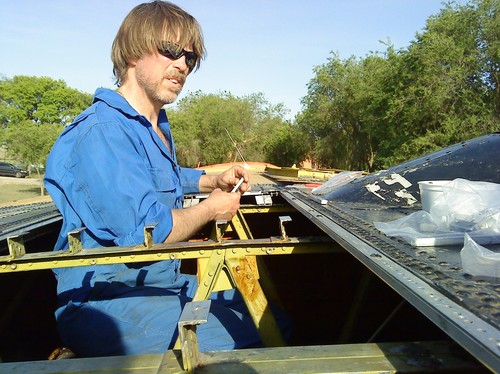
Christer Gustafsson. Very handy and nice good friend that had the good taste to make his vacation
in Spain and bring his son to help me. Thanks!

Back to Barkarby where Curt and his family runs Arigo that suppies most of the stuff needed for this project.
Here Stefan and his brother i sorting the hoses that need replacement. 60 something...

As close to a glass cockpit as this aircraft will get. Any body that has a KX155 or two to spare?
Someone seems to have mistaken his radios for mine..

L/H fuel shutoff valve.
Greetings from CampCat 2009!

....and let there be light...

Meanwhile in Cuatro Vientos

Eng #2 in the process of being prepared for installation in a not too distant future.

Nice and clean covlings. Both pics provided by Roberto Yañez who apart from taking beautiful pictures, is a very nice guy and is very knowledgeable in Spanish aviation.
Catalina 47002 taking off. Just a nice picture.

More pics from 17-25 april 2009

Getting the nosewheel off.

One of the two spacers that makes it possible to fit a 29 tyre where the standard,
now unavailable, 30" smootcontour tyre normally resides.

Me and Stone doing morning exersise!

Fuelhoses in the pylon, just worward of bulkhead #4. Some of them manufactured in 1967...
they are now removed and will be replaced with new ones.

Birdnest in the elevator.

Stainless screws are nice but does not help much when the nuts are not.
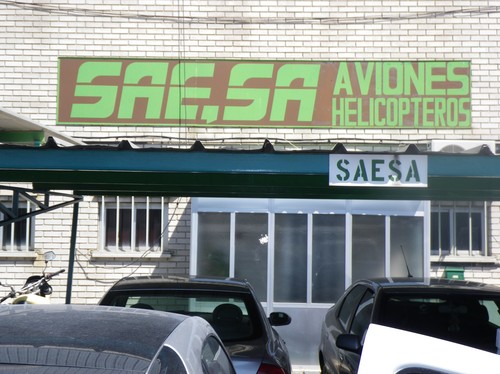
Outside the SAESA hangar at Cuatro Vientos airport, southwest Madrid. SAREA is short for
Servicios Aero Espanola SA. Spanish Air Services.

Latest flight with 64064 was to Ocaña some 70km south of Madrid.

View from the aft hatch. Toilet is hanging on the wall. In the next room you can
see the rear side of the tank with one of the tubes that fills the 4500L watertank.
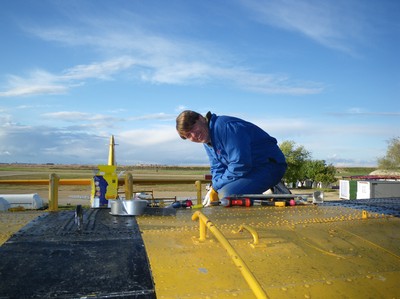
Only a few screws left, beautiful weather!

The stainless screws that held the tank hatches were very soft and got stuck when the corroded
nuts started to fight back.
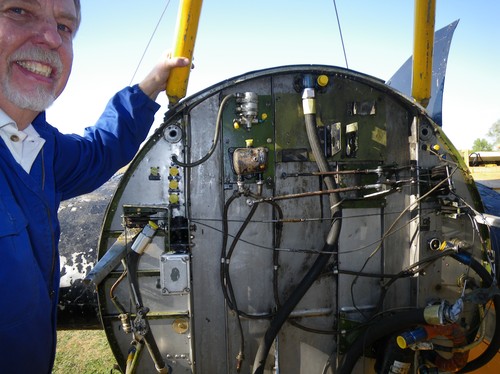
Sture is one of the faithful supporters that elected to come with me and help on this trip. He is the
proud owner of SAAB-91 Safir SE-IGK which he, together with Åke, has put in a pristine condition.
Sture, a dentist by proffession, did not rest until he had the firewalls as spotless as his smile.
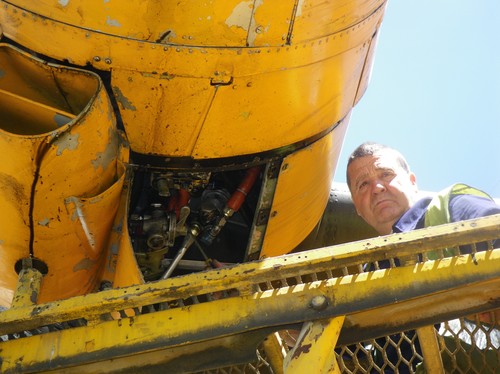
Dasa agin here with the left engine of EC-EVK at Cuatro Vientos.

Me, Rodolfo Schreier agood friend who used to fly the Catalinas of SAESA and
Raoul Aranda Montero, The owner of SAESA, discussing something.

Cleaning out the nacelle of the #1 engine.

How to lift the nosewheel iaw the mainenance manual.
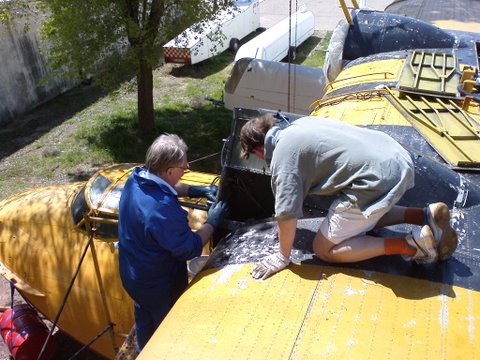
Inspecting Stures work.
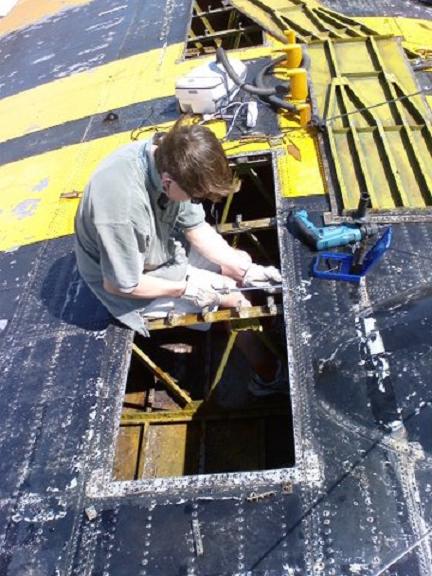
Removing the corroded nut channels. Any readers that have new replacements?

Ventilating the tanks

Inside the pylon

Exercising the floats.

Styre got tyred..
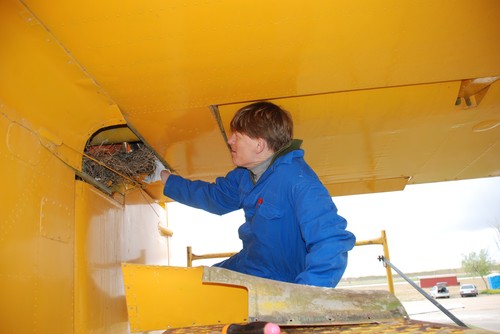
Birdie nam nam.

Nut channels and plates removed.

Ocana airport at dawn seen from the gas station.
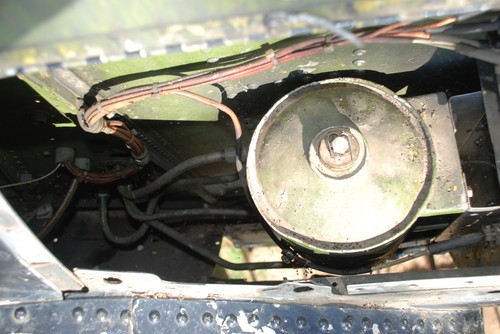
Hydraulic tank R/H side of eng #2
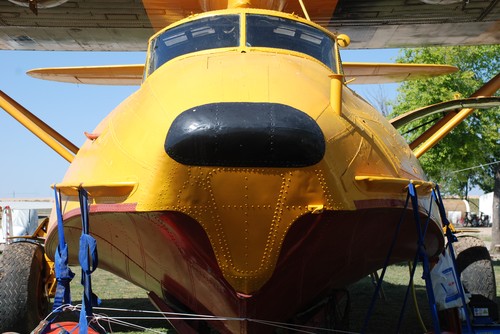
Water and scotchbrite does wonders with ages of dirt.
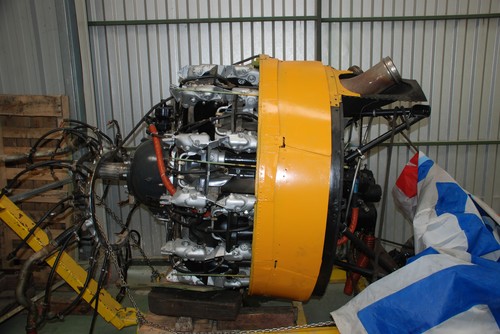
Engine #1 waiting to be installed

Same as above.

Another engine..

Sture and Stone made wonders with the windows.
17-22 April2009
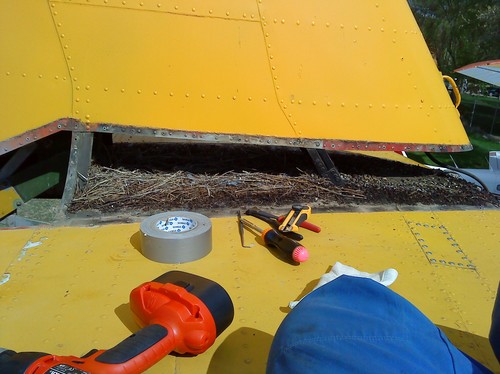
Birds nest galore!

Pretty gas staion in Ocana city

Lunch break

The TP-47 at the airforce museum will get company soon. Here in the process of being
prepared for the inaguration of the new museum in june 2010.

Finally the tanks revealed their secrets.

Sture preparing firewall #1.

Ventilation of both tanks

LH tank. with grafiti. KC76 who are you?

Excersising the floats. Years of leaves and crap was lodged between the wing and the strut.

Sture working om firewall#2 and Stone removing the corroded fuel connection, normally
used for draining fuel when used as a fuel hauler.
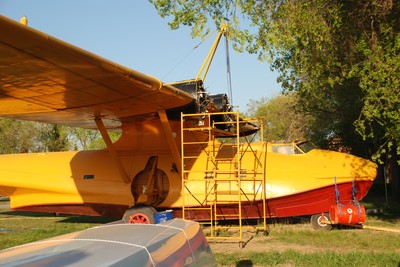
R/H Engine removed.

The combined engine and prop lifting tool is fantastic. Just bolt on and lift.

Some nice Pics from Roberto. The guys at SAESA (Previousowner) are preparing two engines
to be installed. This one had a birdsnest in the manifold. (No animals were hurt during the removal of this engine :-).)
Some more general Catstuff while waiting for progress on FMC.
Some more pics

Cockpit L/H side

Cockpit R/H side.

Cockpit Aft view.

Electrical center. On bulkhead #4.


Scooping probe.
Consolidated PBY Catalina Story
Catalina display Omaka, NZ.
Some nice Cat stuff while waiting.
I will have to go to work for a week or two until I can go to Madrid again. I will try and post some other cat stuff in the mean time. If you have any suggestions please write to...
Hydroavion[at]hotmail.com
/D
